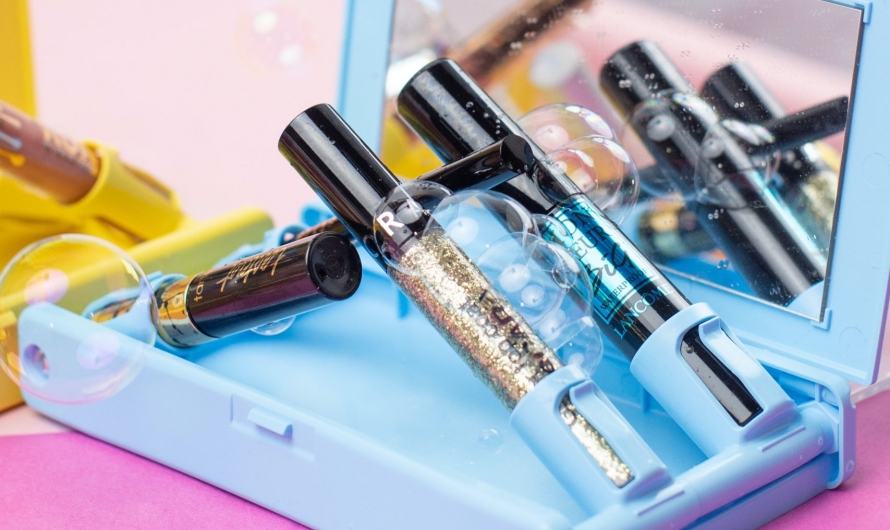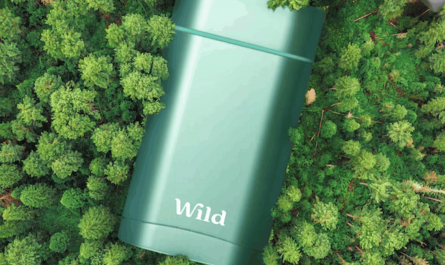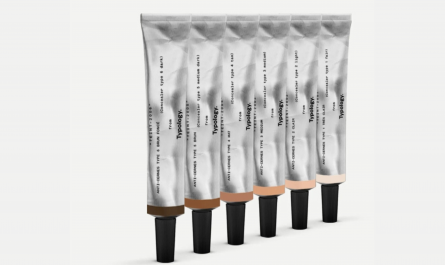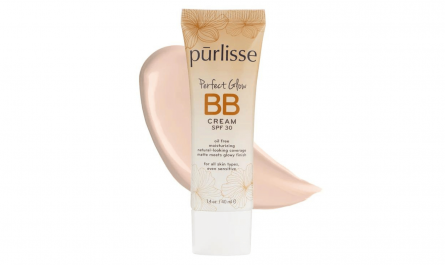If you love makeup, you probably have a collection of makeup products and tools that you use regularly. But do you know how to clean and sanitize them properly? Cleaning and sanitizing your makeup products and tools is not only important for hygiene reasons, but also for the quality and performance of your makeup. In this article, we will show you how to clean and sanitize your makeup products and tools in easy and effective ways. You will learn why it is important to do so, what are the risks of using dirty or expired makeup products and tools, how often you should do it, and how to do it for different types of products and tools. Let’s get started!
Why is it important to clean and sanitize your makeup products and tools?
Cleaning and sanitizing your makeup products and tools is important for several reasons:
- It prevents the growth of bacteria, fungi, viruses, or other microorganisms that can cause infections, irritations, allergies, or acne on your skin or eyes.
- It removes the buildup of dirt, oil, sweat, dead skin cells, or other impurities that can clog your pores, dull your complexion, or affect your makeup application.
- It preserves the quality, texture, color, pigmentation, or shelf life of your makeup products by preventing them from drying out, oxidizing, separating, or changing their formula.
- It improves the performance, efficiency, accuracy, or durability of your makeup tools by preventing them from shedding, breaking, bending, or losing their shape.
What are the risks of using dirty or expired makeup products and tools?
Using dirty or expired makeup products and tools can pose several risks for your health and beauty:
- It can cause infections such as conjunctivitis (pink eye), styes (eyelid bumps), blepharitis (eyelid inflammation), keratitis (corneal inflammation), or herpes simplex (cold sores) on your eyes or lips.
- It can cause irritations such as rashes, redness, itching, burning, swelling, or peeling on your skin.
- It can cause allergies such as hives (itchy bumps), eczema (dry patches), contact dermatitis (skin reaction), or anaphylaxis (severe allergic reaction) on your skin.
- It can cause acne such as blackheads (clogged pores), whiteheads (closed comedones), pimples (inflamed comedones), cysts (deep nodules), or scars on your skin.
- It can compromise the quality of your makeup by making it look cakey, patchy, streaky, uneven, or faded on your skin.
- It can damage your makeup tools by making them lose their bristles, softness, shape, or function.
How often should you clean and sanitize your makeup products and tools?
The frequency of cleaning and sanitizing your makeup products and tools depends on several factors, such as:
- How often you use them
- How you store them
- How you share them
- What type of products or tools they are
As a general rule, you should clean and sanitize your makeup products and tools at least once a month, or more often if you use them daily, store them in humid or warm places, share them with others, or have sensitive or acne-prone skin. You should also check the expiration dates of your makeup products and discard them if they are past their shelf life.
How to Clean and Sanitize Your Makeup Products
To clean and sanitize your makeup products, you will need some items such as:
- Alcohol (at least 70% concentration)
- Cotton pads or balls
- Cotton swabs or buds
- Tissue paper or paper towels
- Spray bottle or dropper
Here are the steps to clean and sanitize different types of makeup products:
How to clean and sanitize your powder products (such as eyeshadows, blushes, bronzers, etc.)
Powder products are usually the most durable and long-lasting type of makeup products, as they have less water content and are less prone to bacterial growth. However, they can still accumulate dirt, oil, or bacteria on their surface over time, especially if you use them with wet brushes or sponges. To clean and sanitize your powder products, follow these steps:
- Wipe off the top layer of the powder product with a dry tissue paper or paper towel, to remove any dust or debris.
- Spray some alcohol on a cotton pad or ball, and gently rub it over the surface of the powder product, to disinfect it and kill any germs.
- Let the powder product air dry completely before closing the lid or using it again.
How to clean and sanitize your cream or liquid products (such as foundations, concealers, lipsticks, etc.)
Cream or liquid products are usually the most delicate and short-lived type of makeup products, as they have more water content and are more prone to bacterial growth. They can also change their texture, color, or smell over time, especially if you expose them to heat or light. To clean and sanitize your cream or liquid products, follow these steps:
- Wipe off the opening or the applicator of the cream or liquid product with a tissue paper or paper towel, to remove any excess product or residue.
- Dip a cotton swab or bud in some alcohol, and gently swipe it around the opening or the applicator of the cream or liquid product, to disinfect it and kill any germs.
- Let the cream or liquid product air dry completely before closing the lid or using it again.
How to clean and sanitize your pencil or gel products (such as eyeliners, lip liners, brow pencils, etc.)
Pencil or gel products are usually the most versatile and convenient type of makeup products, as they can be used for different purposes and areas. However, they can also harbor bacteria, dirt,or oil on their tips or caps over time, especially if you use them on your eyes or lips. To clean and sanitize your pencil or gel products, follow these steps:
- Sharpen your pencil product with a clean sharpener, or twist up your gel product to expose a fresh tip, to remove any old or contaminated product.
- Wipe off the tip of the pencil or gel product with a tissue paper or paper towel, to remove any shavings or residue.
- Spray some alcohol on a cotton pad or ball, and gently rub it over the tip of the pencil or gel product, to disinfect it and kill any germs.
- Let the pencil or gel product air dry completely before closing the cap or using it again.
How to clean and sanitize your mascara and eyelash curler
Mascara and eyelash curler are two essential products for enhancing your lashes and making your eyes look more open and expressive. However, they can also be a breeding ground for bacteria, fungi, or viruses that can cause eye infections or irritations. To clean and sanitize your mascara and eyelash curler, follow these steps:
- Wipe off the wand of the mascara with a tissue paper or paper towel, to remove any clumps or excess product.
- Dip the wand of the mascara in some alcohol, and swirl it around to disinfect it and kill any germs.
- Let the wand of the mascara air dry completely before putting it back in the tube or using it again.
- Wipe off the clamp of the eyelash curler with a tissue paper or paper towel, to remove any dirt or debris.
- Spray some alcohol on a cotton pad or ball, and gently rub it over the clamp of the eyelash curler, to disinfect it and kill any germs.
- Let the eyelash curler air dry completely before using it again.
How to Clean and Sanitize Your Makeup Tools
To clean and sanitize your makeup tools, you will need some items such as:
- Mild soap or shampoo
- Warm water
- Alcohol (at least 70% concentration)
- Cotton pads or balls
- Cotton swabs or buds
- Tissue paper or paper towels
- Spray bottle or dropper
- Towel or cloth
Here are the steps to clean and sanitize different types of makeup tools:
How to clean and sanitize your makeup brushes
Makeup brushes are one of the most important and frequently used makeup tools, as they help you apply, blend, and contour your makeup products. However, they can also accumulate makeup residue, dirt, oil, bacteria, or dead skin cells on their bristles over time, which can affect their performance and quality. To clean and sanitize your makeup brushes, follow these steps:
- Wet the bristles of the makeup brush with warm water, avoiding the ferrule (the metal part that connects the bristles to the handle) and the handle (the wooden part that you hold), as they can loosen or damage over time if exposed to water.
- Apply a small amount of mild soap or shampoo on the palm of your hand, and gently massage it into the bristles of the makeup brush, creating a lather. You can also use a silicone brush cleaning mat or glove if you have one.
- Rinse the bristles of the makeup brush with warm water, until the water runs clear and no soap residue is left. Squeeze out any excess water from the bristles with your fingers.
- Reshape the bristles of the makeup brush with your fingers, restoring their original shape and form. the bristles hanging over the edge, to allow them to dry naturally. Avoid standing the makeup brush upright, as the water can drip down to the ferrule and the handle and cause damage.
- Spray some alcohol on a cotton pad or ball, and gently rub it over the ferrule and the handle of the makeup brush, to disinfect them and kill any germs.
- Let the makeup brush air dry completely before using it again.
How to clean and sanitize your makeup sponges or beauty blenders
Makeup sponges or beauty blenders are another popular and useful makeup tool, as they help you apply, blend, and bounce your makeup products. However, they can also absorb makeup residue, dirt, oil, bacteria, or water on their pores over time, which can affect their performance and quality. To clean and sanitize your makeup sponges or beauty blenders, follow these steps:
- Wet the makeup sponge or beauty blender with warm water, until it expands and becomes soft and squishy.
- Apply a small amount of mild soap or shampoo on the makeup sponge or beauty blender, and gently squeeze it in your hand, creating a lather. You can also use a special cleanser designed for makeup sponges or beauty blenders if you have one.
- Rinse the makeup sponge or beauty blender with warm water, until the water runs clear and no soap residue is left. Squeeze out any excess water from the makeup sponge or beauty blender with your hand.
- Microwave the makeup sponge or beauty blender in a microwave-safe bowl filled with water for about 30 seconds, to sanitize it and kill any germs. Be careful not to overheat it or burn yourself.
- Let the makeup sponge or beauty blender air dry completely before using it again.
How to clean and sanitize your makeup applicators or tools (such as tweezers, scissors, sharpeners, etc.)
Makeup applicators or tools are some of the most handy and convenient makeup tools, as they help you apply, trim, shape, or sharpen your makeup products. However, they can also collect bacteria, dirt, oil, or rust on their surfaces over time, which can affect their performance and quality. To clean and sanitize your makeup applicators or tools, follow these steps:
- Wipe off any product residue or debris from the makeup applicator or tool with a tissue paper or paper towel.
- Dip a cotton swab or bud in some alcohol, and gently swipe it over the surface of the makeup applicator or tool, to disinfect it and kill any germs.
- Let the makeup applicator or tool air dry completely before using it again.
Conclusion
Cleaning and sanitizing your makeup products and tools is not only a matter of hygiene, but also a matter of beauty. By doing so regularly and properly, you can prevent infections, irritations, allergies, or acne on your skin or eyes. You can also preserve the quality, texture, color,pigmentation, or shelf life of your makeup products by preventing them from drying out, oxidizing, separating, or changing their formula. You can also improve the performance, efficiency, accuracy, or durability of your makeup tools by preventing them from shedding, breaking, bending, or losing their shape.
We hope you enjoyed this article and found it helpful. If you did, please share it with your friends and family who might also want to learn how to clean and sanitize their makeup products and tools. And if you have any questions or feedback, please leave them in the comments section below. We would love to hear from you!
FAQs
Q: How can I tell if my makeup products or tools are dirty or expired?
A: Some signs that your makeup products or tools are dirty or expired are:
- They have a strange or unpleasant smell
- They have a change in texture, color, or consistency
- They have a separation of ingredients or a formation of clumps
- They have a growth of mold or fungus on their surface
- They have a rust or corrosion on their metal parts
- They have a loss of bristles, softness, shape, or function
Q: How can I store my makeup products and tools properly?
A: Some tips to store your makeup products and tools properly are:
- Keep them in a cool, dry, and dark place away from heat, light, or moisture
- Keep them in their original packaging or in airtight containers to prevent contamination or oxidation
- Keep them organized and separated by type, color, or function to prevent confusion or mixing
- Keep them clean and sanitized before and after each use to prevent bacterial growth or infection
Q: How can I recycle or dispose of my makeup products and tools safely?
A: Some tips to recycle or dispose of your makeup products and tools safely are:
- Check the labels or the packaging of your makeup products for any recycling symbols or instructions
- Remove any excess product or residue from your makeup products or tools before recycling or disposing of them
- Separate the different materials of your makeup products or tools such as plastic, metal, glass, wood, etc. and recycle them accordingly
- Dispose of any hazardous materials such as batteries, aerosols, nail polish remover, etc. in a special collection bin or facility
- Donate any unused or gently used makeup products or tools to a charity, a friend, or a family member if they are still in good condition
Q: How can I save money on my makeup products and tools?
A: Some tips to save money on your makeup products and tools are:
- Buy only what you need and use regularly and avoid impulse buying or hoarding
- Choose quality over quantity and invest in durable and versatile products or tools that can last longer and perform better
- Compare prices and reviews online or in-store before buying any product or tool and look for discounts, coupons, or sales
- Use multipurpose products or tools that can serve different functions and create different looks
- Use every last drop of your product or tool by cutting open tubes, scraping pans, sharpening pencils, etc.
Q: How can I learn more about makeup products and tools?
A: Some ways to learn more about makeup products and tools are:
- Read blogs, magazines, books, or articles about makeup trends, tips, tricks, or reviews
- Watch videos, tutorials, demos, or reviews on YouTube, Instagram, TikTok, or other platforms
- Follow makeup artists, influencers, celebrities, or brands on social media or websites
- Join online or offline communities, forums, groups, or clubs of makeup enthusiasts or experts
- Take online or offline courses, classes, workshops, or seminars on makeup techniques or skills




